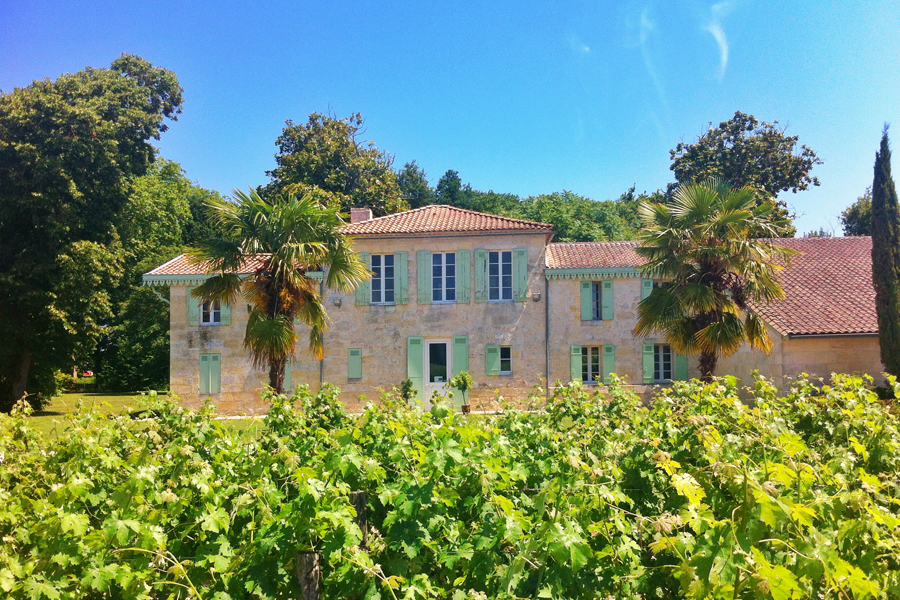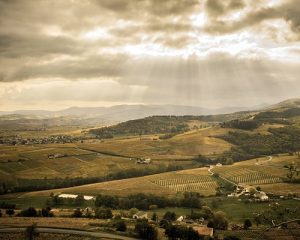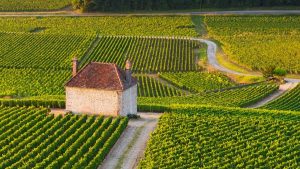
Vines tended to with utmost care, vinifications by the book, and meticulous maturation are just a global overview of this family property which, far from aiming for vast quantity in its production, is performing a craft above even its classification as a Cru Bourgeois Exceptionnel. The key to this success? Surely, it’s the way their 80-year-old Petit Verdot vines are cultivated…
Bordeaux doesn’t hold back in the number of globally renowned grands crus it houses. Among the regional gems that produce exceptional bottles is Château Belle-Vue, an Haut-Médoc estate that finds itself increasingly prized. Since it was taken up by the Mulliez family in 2004, Château Belle-Vue has been on a path to true excellence thanks to the dedicated work put into improving the quality of the domain’s produce. Its placement as a Cru Bourgeois Exceptionnel in 2020 is just recompense for this effort.
Château Belle-Vue is a real beauty, with around fifteen hectares of vines planted, on average, thirty years ago. Some of them were planted as far back as 1907! In any case, they are all cultivated with great care that manifests as soil ploughing, grass growing, debudding, and a continual observation of ripeness through testing the grapes regularly. This work is carried out by a permanent team of six employees who are helped out by around ten seasonal workers and up to thirty harvesters when the time comes.
Petit Verdot, Château Belle-Vue’s signature grape
The original planting proportions are made up of Cabernet Sauvignon, Merlot, and Petit Verdot, the latter making up 30% of the total vines. Petit Verdot is a late-ripening grape that expresses itself especially well when grown in the southern Médoc. Often judged too awkward to grow, many regional properties have totally eradicated it from their choice of varietals. Its branches and large leaves are demanding throughout the year, and trellises have to be built to support the vines. Also, its abundant yield doesn’t naturally lend itself to high quality fruit. However, in its mastered form, the Petit Verdot grape offers a unique complexity expressed with a spicy side, fresh flavours, and a very pure profile. The Mulliez family thus took the time to understand this varietal, getting to know it and tending to its supplementary needs. Today, the property has made this varietal that comes from massal selection a signature of its wine.
Responsible agriculture
Coaxing these vines into life and caring for them is also about following responsible principles for Château Belle-Vue. The criteria outlined by their HVE 3 certificate (the highest level of the Haute Valeur Environnementale award) means that questions of sustainability, environment, and climate are all considered throughout the development of processes. In concrete terms, biodiversity is greatly encouraged here thanks to other kinds of plant life that are allowed to grow, and these are carefully selected depending on the parcels and grapes in question.
Working in the winery
Once the fruit has been harvested – mechanically for the younger vines, by hand for the older ones – the grapes are carefully sorted through. Vinification takes place in thermo-regulated, stainless steel vats, along with a week-long maceration at low temperatures. This ensures a good extraction of aromas. The juice then ferments, a process carried out by wild yeasts; some external yeasts may be added if needed. A further extraction takes place, this time for 10 to 12 days, and the process is refined according to a careful method of tasting; the objective is a subtle and balanced wine that is easy to drink and enjoyable in the short term. The fruit macerates once more, this time to extract the fleshy character and let the tannins develop. Once the sediment is separated from the liquid, the wine is transferred to 225-litre French oak barriques (20% new wood) to be matured. These containers are chosen for their medium toasting so as not to mark the wine too heavily. The wine ages for 12 to 14 months before finally being fined using egg white; this is the final moment of refinement to remove any impurities.
The fruit of all these efforts is a wine that marries elegance and power, all whilst offering a complex aromatic palette. It can be enjoyed in its youth, though some of the cuvées have the potential to be aged for up to ten years. After three to five years in the cellar, this wine will still possess its fruity freshness and its tannins will have gained a silky touch. Certain wine lovers have been known to label the cuvées of Château Belle-Vue as ‘hedonistic’…so you can decide for yourselves!




